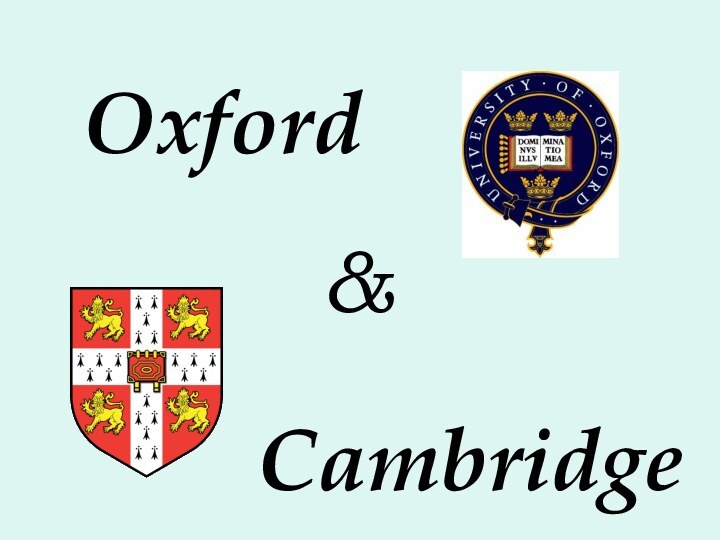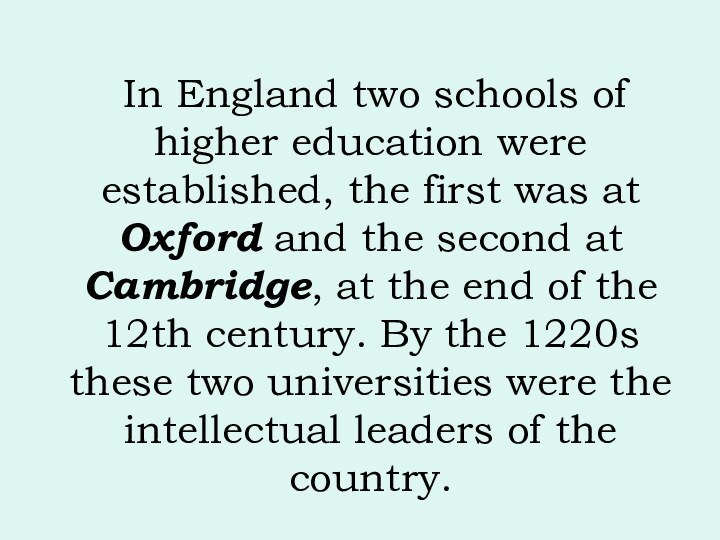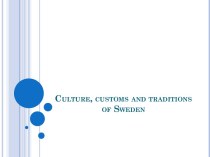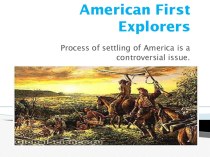- Главная
- Разное
- Бизнес и предпринимательство
- Образование
- Развлечения
- Государство
- Спорт
- Графика
- Культурология
- Еда и кулинария
- Лингвистика
- Религиоведение
- Черчение
- Физкультура
- ИЗО
- Психология
- Социология
- Английский язык
- Астрономия
- Алгебра
- Биология
- География
- Геометрия
- Детские презентации
- Информатика
- История
- Литература
- Маркетинг
- Математика
- Медицина
- Менеджмент
- Музыка
- МХК
- Немецкий язык
- ОБЖ
- Обществознание
- Окружающий мир
- Педагогика
- Русский язык
- Технология
- Физика
- Философия
- Химия
- Шаблоны, картинки для презентаций
- Экология
- Экономика
- Юриспруденция
Что такое findslide.org?
FindSlide.org - это сайт презентаций, докладов, шаблонов в формате PowerPoint.
Обратная связь
Email: Нажмите что бы посмотреть
Презентация на тему Oxford
Содержание
- 2. In England two schools of higher education
- 4. Oxford is a city and
- 5. Oxford in the past: the cityOxford is
- 6. 1201:the head of the University was named
- 7. In the 18th century Oxford was era
- 8. What did the students learn in the
- 9. Oxford is ranked in the world’s top
- 10. Cambridge
- 11. The city of Cambridge is an old
- 12. University of CambridgeOxford and Cambridge have had
- 13. The University of Cambridge was first established
- 14. Trinity College was founded by Henry VIII
- 15. Cambridge University Press originated with a printing
- 16. Скачать презентацию
- 17. Похожие презентации
In England two schools of higher education were established, the first was at Oxford and the second at Cambridge, at the end of the 12th century. By the 1220s these two universities were the intellectual leaders
















Слайд 4
Oxford is a city and local
government discrict in Oxfordshire, England, with a population of
134,248 (2001 census). It is the home of the University of Oxford, the Christ Church Cathedral and the Town Hall.
Слайд 5
Oxford in the past: the city
Oxford is the
oldest university in the English speaking world, it can
lay claim to 9 centuries of continuous existence. There is no clear date of foundation, but teaching existed at Oxford in some form in 1096 and developed rapidly.1167: Henry II banned English students from attending the University of Paris.
The prestige of Oxford is seen in the fact that it received a charter from King Henry II, granting its citizens the same privileges and exemptions as those enjoyed by the capital of the kingdom; and various important religious houses were founded in or near the city.
Parliaments were often held in the city during the thirteenth century.
The Provisions of Oxford were installed in 1258 by a group of barons led by Simon de Montfort; these documents are often regarded as England's first written constitution.
A map of Oxford, 1605
Слайд 6 1201:the head of the University was named a
chancellor.
1231:the new name:‘universitas’ of the institution
In the mid-13th century:
religious orders settled in Oxford which maintained houses for students Soon collages were established
1250s:Balliol and Merton Colleges were established. (They are the oldest.)
In 1530, Henry VIII forced the University to accept his divorce from Catherine of Aragon.
1642-1649 English Civil War: the university was the centre of the Royalist Party.
Oliver Cromwell (chancellor from 1650 to 1657) prevented Oxford and Cambridge from being closed down by the Puritans.
Oxford in the past: the university
Слайд 7 In the 18th century Oxford was era of
scientific discovery and religious revival.
Religious controversy ->John Henry Newman,
became a Roman Catholic in 1845 and was later made a Cardinal.(Anglican Church<->Roman Catholic)
From 1878, academic halls were established for women, who became members of the University in 1920. Since 1974, all but one of Oxford's 39 colleges have changed their statutes to admit both men and women. St Hilda's remains the only women's college.
Oxford's second university, Oxford Brookes University, formerly the Oxford School of Art, based on Headington Hill, was given its charter in 1991 and has been voted for the last five years the best new university in the UK.
Слайд 8
What did the students learn in the Middle
Ages?
Grammar,Rhetoric,LogicAstronomy,Arithmetich,Music,
Geometry and Latin.
Few could go
to the universities. Most English people spoke neither Latin (the language of the Church and of education), nor French (the language of law and of the Norman rulers). It was a long time before English became the language of the ruling class. By the end of the Middle Ages, English as well as Latin was being used.
Many schools were opened, because there was a growing need for educated people who could administer the government, the Church, the law and trade
The method of teaching at the university was transformed the medieval Scholastic method to Renaissance education in the 15th century.
-19th century:included the replacement of oral examinations with written entrance tests; greater tolerance for religious dissent; the establishment of four colleges for women.
General information about education:
Слайд 9 Oxford is ranked in the world’s top ten
universities.
It is a member of the Russell Group of
research-led British universities, the Coimbra Group( a network of leading European universities)Some known people who have attended the University of Oxford:
Percy Bysshe Shelley,Cecil Day-Lewis, Tony Blair,
Actors: Hugh Grant, Kate Beckinsale
(The official website: http://www.ox.ac.uk/ )
Reputation
Слайд 11 The city of Cambridge is an old English
university town and the administrative centre of the county
of Cambridgeshire. It is also at the heart of the high-technology centre known as Silicon Fen.Cambridge is best known for the University of Cambridge, which includes the renowned Cavendish Laboratory, King's College Chapel, and the Cambridge University Library.
According to the 2001 census, the City's population was 108,863 (including 22,153 students).
Kings College Chapel, seen from The Backs.
Слайд 12
University of Cambridge
Oxford and Cambridge have had a
long history of rivalry with each other.
The University of
Cambridge is the 2nd oldest university in the English-speaking world and has a reputation as one of the world’s most prestigiuos universities.According to legend, the University dictated their location: well away from the centre of town, so that the possibility of quick access to London would not distract students from their work. However, there is no basis for this in written record.
A map of Cambridge University
Слайд 13 The University of Cambridge was first established in
1209 (by a group of scholars fleeing authorities in
Oxford, and its oldest college, Peterhouse, was founded in 1284.)In 1209, scholars taking refuge from hostile townsmen in Oxford migrated to Cambridge and settled there. At first they lived in lodgings in the town, but in time houses were hired as hostels with a Master in charge of the students.
By 1226 the scholars were numerous enough to have set up an organisation, represented by an official called a Chancellor, and seem to have arranged regular courses of study, taught by their own members.
King Henry III took the scholars under his protection as early as 1231 and arranged for them to be sheltered from exploitation by their landlords. At the same time he tried to ensure that they had a monopoly of teaching, by an order that only those enrolled under the tuition of a recognised master were to be allowed to remain in the town.
Cambridge in the past: the university
Слайд 14 Trinity College was founded by Henry VIII from
the two small houses of King’s Hall and Michaelhouse.
Henry
VIII had issued a series of injunctions to the University in 1536 suppressing the Faculty of Canon Law and forbidding the study of scholastic philosophy. The study of canon law declined, and the Greek and Latin classics, mathematics and Biblical studies now came to the fore.Слайд 15 Cambridge University Press originated with a printing licence
issued in 1534
Reputation:
Some known people who have attended the
University of Oxford:Sir Francis Bacon, Lord Byron,Charles Darwin,Isaac Newton,William Wordsworth,
Bill Gates
The official website:www.cam.ac.uk/





























